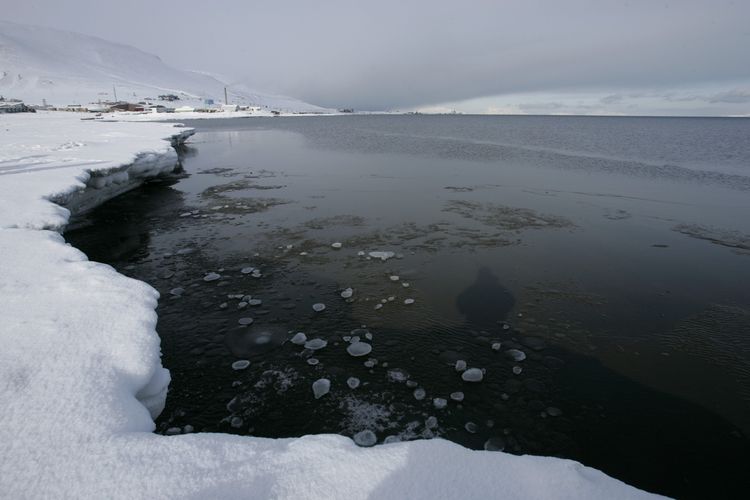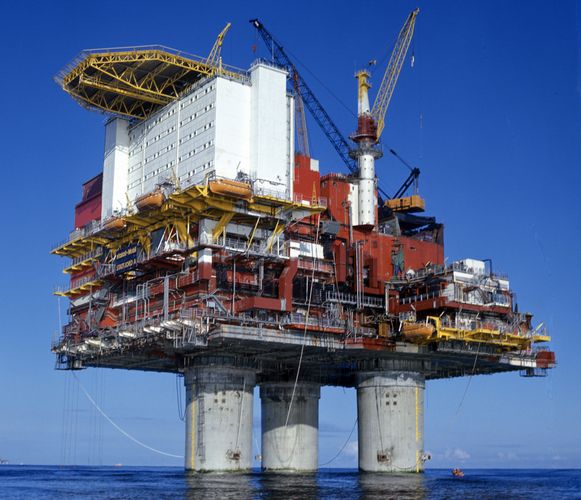During the dark days of November when financial markets were in thrall to the eurozone sovereign crisis and Spanish and Italian bonds were in virtual free-fall, propped up by the central bank, the SSA sector was stung by a sudden and dramatic downgrade to Eksportfinans to junk. In addition to massive mark-to-market volatility, it triggered a sudden and frantic reappraisal of its peer group.
To view the digital version of this report, please click here.
Investors were already struggling to cope with a dramatic change in circumstances, with much of the eurozone’s sovereign bonds no longer deemed risk-free. The banking sector was completely lacking with the indices hitting record wides. Even Europe’s bailout fund, the EFSF was struggling to raise funds at a rate, and in a manner, befitting a Triple A rated supranational. And there was the demise of another bank – Dexia.
Then came the Norwegian bombshell. Given its ample oil and gas reserves, and ever strong export sector, this Triple A rated Nordic stronghold was the last place anyone was expecting trouble from.
“Who would have thought it would have brought about a complete and wholesale reappraisal of the SSA sector? It was like adding Vermouth to a Martini, said one observer.
An innocuous-looking press release from the Norwegian government pitched investors in its long-standing export finance agency into the mire.
“The government intends to establish a state-funded scheme for export credit financing for the Norwegian export industry. The purpose is to provide financing that will ensure competitive conditions for Norwegian exporters,” said Prime Minister Jens Stoltenberg at the time.
Terminating Eksportfinans’ monopoly in providing government-subsidised export credits – so-called CIRR-loans – caught everyone; investors, bankers, ratings agencies and Eksportfinans off-guard.
“We didn’t know until the morning of November 18 the government would take this action,” said Oliver Siem, director of capital markets, executive vice-president at Eksportfinans.
“Who would have thought it would have brought about a complete and wholesale reappraisal of the SSA sector? It was like adding Vermouth to a Martini”
Without the monopoly there was no true business model. Suddenly the implicit government support, investors had foolishly assumed extended beyond a minority 15% ownership stake, was gone. A few days later Moody’s savagely slashed the credit rating on Eksportfinans seven notches from Aa3 to Ba1.
The scale of the ambush is highlighted by the fact that Eksportfinans was actually negotiating with the government in good faith to find a solution for new European rules on large exposures of credit institutions, the night before Oslo’s decree, according to two observers.
Nearly six months later, bankers and investors are still bemused how, and why, this long-running institution had the rug pulled from underneath it in this manner.
Several observers insist that the real reason the government has established its own export financing operation is not readily explained by these new rules on banks’ lending exposures.
“It’s hogwash! It was a peg to hang the hat on,” said one.
Nor, they say, should a well-telegraphed, if far-reaching regulatory change on bank lending have been allowed to darken Norway’s name and roil financial markets during their darkest hour.
Slow ticking time-bomb
In fact, there are various factors that conspired against Eksportfinans, they argue. Firstly, there was a gradual diminution of its public sector mandate which started with greater banking competition in export financing but also by the sale in 2009 of its erstwhile local government lending operation – Kommunekreditt. They say also say a crucial mistake was made behind the scenes, whereby senior management failed to fully connect with the Norwegian business and political establishment.
And then there were financial concerns. At the onset of the financial crisis, the company was tainted for both having bought sub-prime and lent cash to Icelandic banks. Then the government had to extend to it a two-year line of credit for exporters’ use after capital markets access became tricky. Perhaps more crucial to its current woes, is the complexity of its own liabilities, much of it consisting of structured notes, leaving it exposed to substantial counterparty risks to the investment banks.
“It’s hogwash! It was a peg to hang the hat on”
However, the government’s timing last autumn was unfortunate, given all the shocks afflicting markets at that time.
Suddenly observers were able to juxtapose Eksportfinans alongside DEPFA. But to call Eksportfinans Norway’s DEPFA as some have, is unfair, not least because it was not funding short and lending long. Nor was it facing problems with the credit quality of balance sheet’s assets – public sector loans. Furthermore, Eksportfinans has a massive liquidity, despite its sub-investment-grade rating bankers think it will be able to repay its debts.
Yet here is another privately-owned firm, closely associated with the public sector that in major trouble.
In fact the ownership structure, which had previously been so helpful was to prove a major sticking point over achieving a solution.
Eksportfinans was formed 40 years ago by Norway’s commercial banks as their financing and export credit arm. Its business model was simple: financing the export of a foreign purchases of Norwegian goods and services. State-supported financing is guaranteed by the Norwegian Institute for Export Credits (GIEK).
Other lending was backed by Norwegian or major OECD banks. So Eksportfinans might have been the monopoly provider of state-backed lending, it was also financing commercial exports originated by its owners.
The state took a 15% stake in Eksportfinans in 2001, prompted by a desire to keep the Norwegian export sector competitive.
That desire remains strong. The government’s stated rationale for casting Eksportfinans aside and creating a state-funded scheme is to minimise the risks to Norway’s export industry.
“We saw three likely scenarios that it would be folded into another bank, that would be downsized or there would be a big increase in capital. We never saw this fourth option,” said Per Törnqvist, director at Standard & Poor’s.
DnB Bank has the biggest position in Eksportfinans, with 40%, followed by Nordea Bank Norge at 23%. Danske Bank has an 8% holding while Oslo, in addition to its direct stake, has an indirect interest via the 34% of DnB it owns.
S&P now rates Eksportfinans BB+ and following discussions with Oslo it believes the current government’s willingness to provide extraordinary support is low.
The rating reflects its weak business position, strong capital and earnings, weak risk, below average funding and adequate liquidity.
The cost of export finance
“It was a very far reaching change brought through in lightening speed … just six months. The directive was critical for a balance sheet like Eksportfinans,” said Törnqvist.
The rule change meant that the loans guaranteed by banks would attract a 100% capital charge instead of 20%. Some 45% of the loans on Eksportfinans balance sheet are guaranteed through GIEK, and 55% via banks. They also breached the rules for large exposure. The maximum loan size would fall from NKr7.5m to NKr1.3m.
No one should underestimate how important the export sector is to Norway. It is a key driver of Norway’s economy. In 2011 GDP, including the oil sector, was NKr2.41trn, while total 2011 exports were NKr935bn. That is 39%, of which crude and natural gas accounts for some 40%.
The Norwegian export sector is a powerful lobby and was very wary of the threat it faced to its competitive position without cheap and ample financing.
According to one account, the government was willing to boost its capital position but the owners wanted to gain an exception from the directive instead. This is what the Swedish government did for SEK, and it would have allowed the agency to carry on making the kind of big, chunky loans that are critical to meeting its mandate.
“On October 28 the government stated that it wouldn’t apply for an exception. We then had two options: either reduce the size of our exposures or raise capital to deal with the CRD,” said Siem.
“…the financial authorities judged that Eksportfinans was exposed to risks on the funding side. In the long run, therefore, it was difficult to say it should be exempted from the rules”
Eksportfinans already had a very strong balance sheet; 16.1% core capital adequacy. Raising this further would have diminished its rather slim margins further while cutting exposures would have hurt its public sector mandate.
“In Eksportfinans you have owner banks, the state, the Ministry of Finance, the Ministry of Trade. That’s four actors and they all play their part in this equation,” said Törnqvist
The refusal to give Eksportfinans an exemption was a decision taken by the Ministry of Finance, according to a Norwegian government official who spoke on condition of anonymity.
“…the financial authorities judged that Eksportfinans was exposed to risks on the funding side. In the long run, therefore, it was difficult to say it should be exempted from the rules.”
Eksportfinans has never had a problem with the assets it originated related to the export business. But it is clear that the authorities and now the ratings agencies, have a problem with its financing profile. Granting an exception from the Basel rules to a firm which was mostly owned by the private sector was always going to be difficult.
“Maybe that’s where the market misjudged the signals the government sent,” said one observer. It was not just the market.
Eksportfinans assumed it would get a dispensation. The public debate in Norway was also based on the assumption that it would be forthcoming.
“The judgement – as far as I can understand – was that there was too much risk in the total portfolio to have good argument for an exemption,” said the government official.
“If you look at the asset side it is low risk. But Eksportfinans needs a lot of derivatives to transform the risks from its structured bonds,” said Törnqvist.
“It’s swapping equity, FX, interest rate risks – all manner of exotic risk – into counterparty risk with what were historically highly rated investment and international banks.”
S&P argues that managing these risks was a challenge given its internal systems and relatively small number of staff of 98.
In hindsight, connecting the dots it is absolutely clear that the demise of Eksportfinans was planned, well-prepared, and understandable. If the sub-investment grade rating reflects the true underlying risks, the government’s preference for a fresh entity makes perfect sense.

